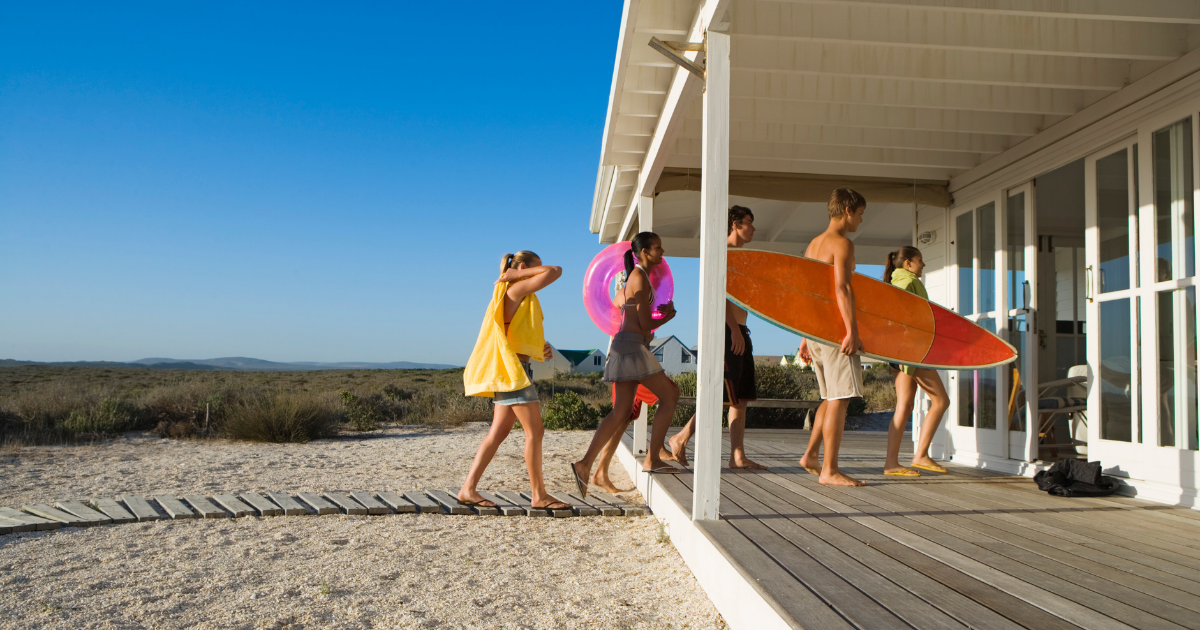Owning a vacation home can be a dream come true. It offers a private retreat where you can relax, recharge, and create lasting memories with family and friends. However, owning a second property also comes with certain responsibilities—especially when it comes to protecting that property. While you may have homeowners insurance for your primary residence, vacation homes require special consideration due to their unique risks and usage patterns. Vacation home insurance is essential to safeguard your property, whether it’s used exclusively by you, rented out to guests, or even left vacant for extended periods. Here’s a comprehensive guide on how to protect your vacation home with the right insurance.
1. Understand the Unique Risks of Vacation Homes
Vacation homes face different risks than your primary residence. One of the most significant differences is that vacation homes are often left vacant for extended periods. This makes them more vulnerable to issues such as:
- Vandalism or theft: Unoccupied homes are at higher risk of being targeted by criminals.
- Weather-related damage: Severe weather conditions like storms, flooding, or snow accumulation can cause damage to unoccupied properties.
- Maintenance issues: Since the property isn’t used regularly, issues like leaks, mold, or pests might go unnoticed and worsen over time.
Additionally, if you decide to rent your vacation home to others, you introduce other types of risks, such as liability for accidents or property damage caused by guests. Understanding these risks will help you determine the right coverage.
2. Assess Your Coverage Needs
Vacation homes require insurance coverage that’s different from what you might have for your primary residence. When evaluating the type of insurance coverage you need, consider the following:
- Property coverage: This is essential to protect the structure of your vacation home in case of damage caused by fire, storms, vandalism, or other covered perils. You’ll want to ensure your policy covers the full replacement value of the home, including any renovations or custom features.
- Contents coverage: Personal belongings in your vacation home should also be protected. This includes furniture, electronics, appliances, and even clothes. Be sure to assess the value of your possessions and consider whether you need additional coverage for high-value items like jewelry or collectibles.
- Liability coverage: If you rent out your vacation home, you need liability coverage in case a guest is injured while staying there. Liability insurance helps cover medical expenses, legal fees, and damages if someone is injured on your property.
3. Consider Natural Disaster Coverage
Certain geographic locations increase the risk of natural disasters like floods, earthquakes, hurricanes, or wildfires. Standard homeowners’ insurance often doesn’t cover these events, so it’s essential to consider additional coverage based on where your vacation home is located:
- Flood insurance: Even if your vacation home isn’t located in a high-risk flood zone, flooding can still occur due to heavy rainfall, snowmelt, or other unpredictable weather patterns. Adding flood insurance can protect your home from water damage.
- Earthquake insurance: If your vacation home is located in an earthquake-prone area, this coverage will protect your property from earthquake damage.
- Hurricane or windstorm insurance: Coastal or waterfront properties should have windstorm insurance to protect against hurricane damage. Make sure this coverage includes both structural and contents protection.
4. Special Coverage for Short-Term Rentals
If you plan to rent out your vacation home to short-term tenants through platforms like Airbnb, VRBO, or Booking.com, you’ll need specialized coverage for the unique risks associated with rental properties. Many insurance companies offer policies tailored to short-term rentals that include:
- Property damage: Coverage for any damage caused by renters, such as broken windows, damaged furniture, or other property destruction.
- Liability protection: In case a guest gets injured during their stay, liability coverage protects you from lawsuits related to accidents.
- Lost rental income: If your property becomes uninhabitable due to damage, rental income loss coverage ensures that you’re compensated for the lost revenue.
Make sure to review your policy’s fine print to see whether short-term rental activities are covered. In some cases, you may need to purchase an endorsement or a separate policy for this type of coverage.
5. Maintain the Property Regularly
Although not directly related to your insurance policy, maintaining your vacation home regularly can help you avoid insurance claims. Insurance companies may be less likely to cover damage caused by poor maintenance, such as roof leaks or mold growth. Regularly inspect your property for any issues, and consider hiring a property manager if you live far away. They can ensure that routine tasks like plumbing checks, lawn care, and snow removal are performed, minimizing the chance of damage.
6. Take Advantage of Safety Features
Many insurers offer discounts for properties with specific safety features that reduce the likelihood of accidents or damage. Consider installing:
- Security systems: Alarm systems, motion detectors, and security cameras help prevent theft and vandalism.
- Fire alarms and extinguishers: These reduce the risk of fire damage and are often required by insurance companies.
- Smart thermostats and water sensors: These can help prevent water damage caused by leaks or frozen pipes, which can be especially damaging in vacant properties.
By investing in these safety features, you can reduce your risks and potentially lower your insurance premiums.
7. Review and Update Your Policy Annually
Your vacation home insurance needs may change over time. Whether you’ve made updates to the property, changed how you use the home, or experienced significant changes in your personal situation, it’s essential to review your insurance policy annually. Make sure it accurately reflects the current value of your home, your belongings, and any changes in how you use the property (e.g., renting it out more often).
Frequently Asked Questions (FAQ)
1. Is vacation home insurance different from regular homeowners insurance? Yes, vacation home insurance is tailored to the specific risks of owning a second property. It accounts for periods of vacancy, potential rental income, and additional liabilities. A standard homeowners insurance policy may not offer the same level of protection for a vacation property.
2. Do I need additional coverage if I rent out my vacation home? Yes, if you rent out your vacation home, you should have coverage that specifically addresses the risks associated with short-term rentals. This includes property damage caused by tenants and liability protection in case a guest is injured on your property.
3. Will my primary home insurance cover my vacation property? Generally, your primary home insurance will not cover your vacation property. You will need a separate policy to insure your second home. However, if both homes are insured with the same provider, you may be able to bundle your policies for a discount.
4. How can I lower my vacation home insurance premiums? You can lower your premiums by installing security systems, fire alarms, and water leak detectors, as well as maintaining the property regularly. Additionally, bundling your vacation home policy with your primary home insurance or opting for higher deductibles can also help reduce your premiums.
Owning a vacation home is a fantastic way to create a personal retreat, but protecting it with the right insurance is vital. Understanding the unique risks of vacation homes, securing appropriate property and liability coverage, and considering additional protections like natural disaster or rental coverage can give you peace of mind. Regular maintenance and safety improvements can further minimize your risk and potentially lower insurance costs. By taking these steps, you can ensure that your vacation home remains a safe and enjoyable getaway for years to come.




